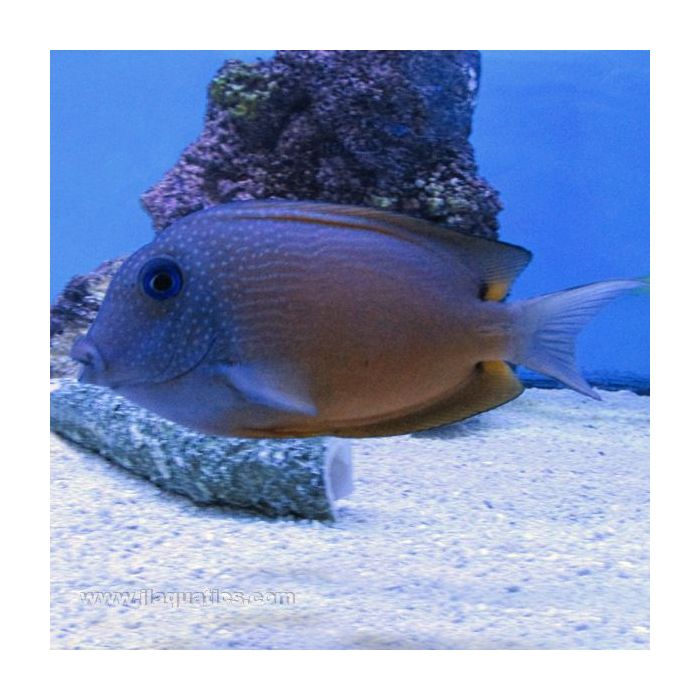Kole (Blue Eye) Tang (Indian Ocean)
The Blue Eye Kole tang has a rusty colored body which turns yellowish orange at the tail. It has bright polka-dots on its face and sapphire blue around its eyes. It also has two dark spots at the base of the tail, one above and one below. Males and females are visually identical.
The Blue Eye Kole can grow to be approximately 8 inches long and needs a large aquarium as an adult, we recommend at least 75 gallons or larger.
Members of the Ctenochaetus genus are known collectively as the bristle tooth or comb tooth tangs. They have special shaped teeth which help them scrape off detritus and filmy diatoms from rocks, and even from the glass, which may leave visible 'kiss marks'. As small juveniles they tend to be yellow. They tend to be some of the smallest and most peaceful tangs. If they are to be kept with other tangs they should be added first, and the aquarium of sufficient size.
Tangs are also called surgeonfish or doctor fish because they have at least one spine just in front of the tail which, when the tail is bent, can be stuck out and used as a threat display or weapon against competitive fish or predators. It is important to be cautious of this spine when handling the fish in a net. They feel most secure when there is plenty of live rock to hide in, as well as open space for swimming. In the wild some tangs live in schools, however in the confines of an aquarium it is usually best to have only one of each genus, or they may be extremely aggressive to each other. They are typically very peaceful with other types of fish.
Care should be taken with tangs to ensure they do not catch external parasites, such as Marine ICH and velvet, to which they are very prone.
Tangs do not eat coral or invertebrates and are considered reef safe. They are primarily herbivorous, and although they love to eat meaty foods, they must be fed plenty of marine algae in order to remain healthy and vigorous. Having a proper diet may also reduce aggressive behaviors; tangs naturally graze on algae throughout the day. Diet should include plenty of marine algae and Spirulina, frozen mysis shrimp, and other high quality items. They typically learn to eat dry foods easily. It is preferable to feed more than once a day, with an algae clip offered approximately every other day.
Customers who bought this also purchased
 Copperband Butterfly (Asia Pacific)Out of stock
Copperband Butterfly (Asia Pacific)Out of stock
















